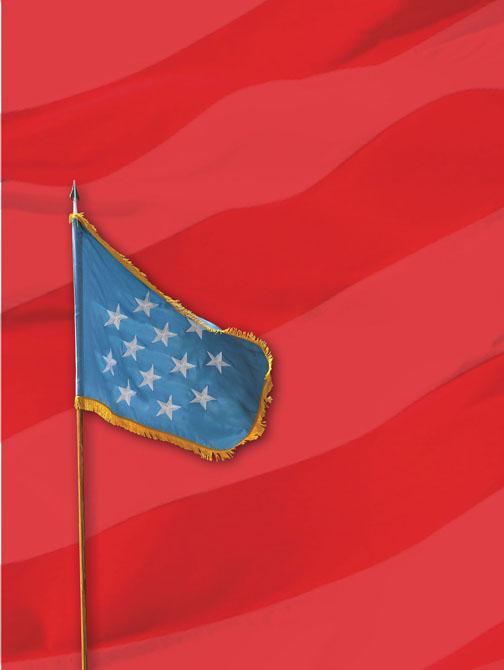
Princetonians have fulfilled the motto “in the nation’s service” in many ways, but one of the most dramatic is through earning the nation’s highest decoration for valor in wartime, the Medal of Honor.
A total of 3,448 Medals of Honor have been awarded — never “won” — since the medal’s origin in 1861. It is awarded in the name of Congress to a person who, while a member of the U.S. military, distinguished himself or herself “conspicuously by gallantry and intrepidity at the risk of his life above and beyond the call of duty.”
Eight Princeton alumni and one professor are known to have received the medal, a total that puts the University behind only West Point, the Naval Academy, and Harvard in number of recipients. Increasingly, the citations are posthumous, and the first six awards given to Princetonians were presented to living men; the last three, to relatives.
Ever since President Abraham Lincoln authorized the Medal of Honor, there have been controversies over its awarding. In the Civil War, 864 members of the 27th Maine Regiment received the medal simply for
re-enlisting (the medals were recalled, along with others, after a review in 1917). Other medals likely were deserved but not given. More than 1.2 million African-Americans served in World War II, yet despite noteworthy displays of heroism, none was awarded a Medal of Honor until 1997, when after an Army study on this racial disparity, President Bill Clinton presented the Medal of Honor to seven black soldiers. Lt. Vernon Baker, the only living recipient, said, “This day will vindicate those men and make things right.”
In some ways, the Medals of Honor awarded to Princetonians — in conflicts stretching from the Civil War to the Korean War — mirror this story, with clear acts of heroism, clouded by controversy over the notorious events at Wounded Knee, S.D.
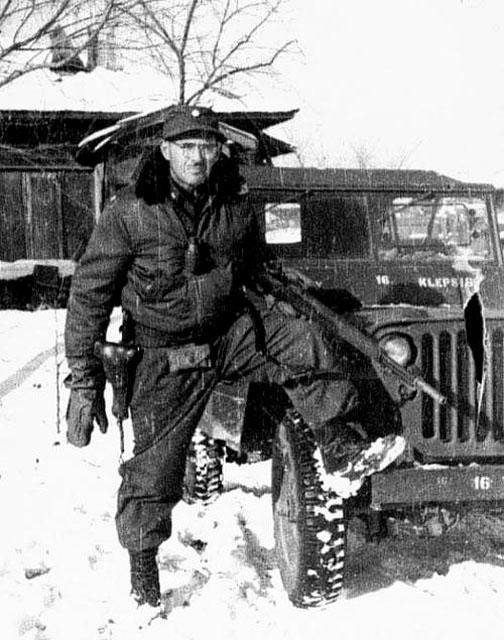
The so-called Forgotten War took the lives of 29 Princetonians. Of the 131 Medals of Honor awarded for Korean War service, Princetonians received two.
LT. COL. JOHN U.D. PAGE ’26
John U.D. Page ’26 was an Army officer who, because of his age — 46 — and high rank, could have avoided serving with the Marines at the bloody battle of Chosin Reservoir. He fought nonetheless, and his 12 days of combat in Korea earned him a posthumous Medal of Honor.
Princeton was Page’s second choice, when his dream of attending West Point was thwarted by weak eyesight. He graduated from Princeton in 1926 with an engineering degree, a varsity letter in pistol, and an ROTC commission, and was called to duty in World War II as a reservist.
Trained in artillery, Page was considered an expert teacher, and he spent the war training troops at Fort Sill, Okla., much to his chagrin. He finally got to command an artillery battery in Germany, and remained in the military after World War II. Assigned to the prestigious Command and General Staff College at Fort Leavenworth, Kans., he pulled strings to go to Korea rather than to the classroom.
Page arrived in Korea in November 1950, just as tens of thousands of Chinese troops were attacking U.S. forces advancing through North Korea. The weather, too, was changing. Page would fight the last 12 days of his life in sub-zero cold.
The bespectacled Page, attached to the 52nd Transportation Truck Battalion, left X Corps headquarters at Hamhung Nov. 29. His mission was to establish traffic control on the main supply route for the 1st Marine Division and some Army units on the Chosin Reservoir plateau. This route would prove critical for the fighting retreat of U.S. forces, which were strung out for some 75 miles from Yudam-ni to Hamhung and the nearby evacuation port of Hungnam.
Page “chose to remain to aid an isolated signal station, thus being cut off with elements of the Marine division,” his citation explains. “After rescuing his jeep driver by breaking up an ambush near a destroyed bridge, Lt. Col. Page reached the lines of a surrounded Marine garrison at Koto-ri. He then voluntarily developed and trained a reserve force of assorted Army troops trapped with the Marines ... .”
Page also helped build an improvised airstrip at Koto-ri, where 750 casualties would be evacuated. The airstrip was under attack, and Page exposed himself to direct fire, twice mounting the rear deck of a tank and firing the machine gun. On Dec. 3, 1950, while being flown low over enemy lines in an observation plane, Page dropped hand grenades on Chinese positions, which he then sprayed with fire from his carbine.
After 10 days of constant fighting, Page was flown to Hamhung to arrange for artillery support. Rather than remain in safety, he joined the rear guard of a convoy as it moved south. As the convoy came under assault in a narrow pass, he manned the machine gun of an abandoned tank, later taking a machine gun to the hillside and fighting it out with the Chinese as the convoy slipped past.
On the night of Dec. 10, the convoy reached Sudong-ni, where it was halted by attacks from a strong enemy force. Page fought his way to the front of the column. His last words to a Marine private accompanying him were: “Get back ... I’ll cover you.” The three-page citation recounting Page’s deeds concludes, “Heedless of his safety, as he had been throughout the preceding 10 days, Lt. Col. Page remained forward, fiercely engaging the enemy single-handed until mortally wounded.”
The ROTC program at Princeton awards an annual scholarship in Page’s name. Bill Lewis ’71, who won the award as an undergraduate, says, “I consider it the highest award I’ve ever won in my life.”
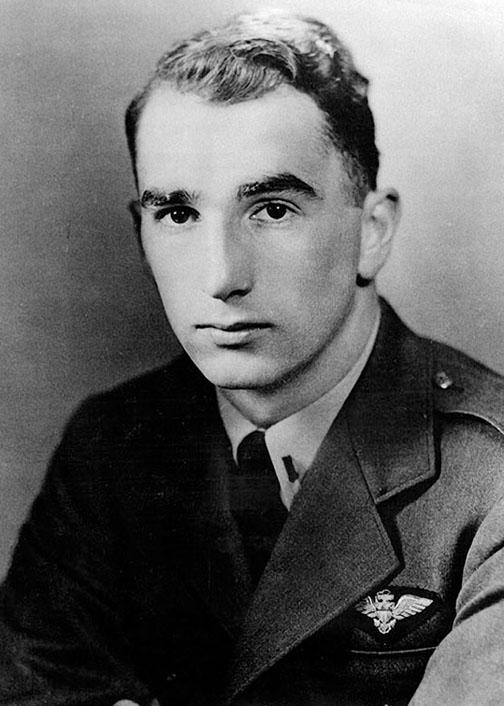
LT. J.G. JOHN KELVIN KOELSCH ’45
The war in Korea placed immense demands on naval aviators, with longer flying hours, more days on the firing line, and greater dangers from anti-aircraft weaponry than required in World War II. One of those Navy pilots was Lt. j.g. John Kelvin Koelsch ’45. Born in London, “Jack” Koelsch entered Princeton after Choate in September 1941. He joined the Navy as a torpedo bomber pilot during World War II, but returned to the University and graduated in 1949 — which was not unusual for members of his war-torn class.
Before he was called up for the Korean War, Koelsch, an English major, planned to go to law school. His sister-in-law, Francita Stuart Koelsch Ulmer, says his optimistic nature can be seen in the title of his thesis, “A Heritage of Hope,” on 19th-century British author George Meredith. “John was the most outstanding brother, a leader, a great athlete, and intellectually stimulating — someone men admired and followed,” says Ulmer.
In Korea, Koelsch piloted a two-man helicopter flying off the aircraft carrier U.S.S. Princeton and later served with a group in Wonsan specializing in pilot rescue. He passed up rotation home after a long tour of duty because he felt his work was urgently needed.
On July 3, 1951, a call went out for helicopter crews. A Corsair fighter flown by Marine Capt. James Wilkins had been shot down over North Korea. Although it was getting dark, Koelsch volunteered for the dangerous mission. In his slow-moving, unarmed helicopter, he and enlisted man George Neal flew into North Korea without fighter escort.
As their chopper hovered at 50 feet it was hit repeatedly by enemy fire, yet Koelsch refused to abandon the mission. “It was the greatest display of guts I ever saw,” Wilkins later said.
The rescuers found Wilkins, but as Neal was winching him aboard, the helicopter was shot down. The three men survived and, under Koelsch's supervision, spent the next nine days evading enemy troops.
After they were captured, Koelsch displayed courage and leadership in a POW camp, sharing his meager rations with others and demanding medical treatment for the sick. Wilkins and Neal survived the North Korean camp, but Koelsch, suffering from malnutrition and dysentery, died in October 1951.
In 1955 Koelsch was posthumously awarded the Medal of Honor, the first helicopter pilot so honored. The citation notes his courage in combat and his bravery, fortitude, and consideration for his companions as a POW. Last March, a Navy helicopter squadron assigned to Marine Corps Base Hawaii named their flight simulator building for Koelsch. Wrote Lt. Cmdr. Ike Stutts: Because Koelsch was “a Navy helicopter pilot who rescued a Marine aviator, we thought there could be no better fit for the name of our building.”
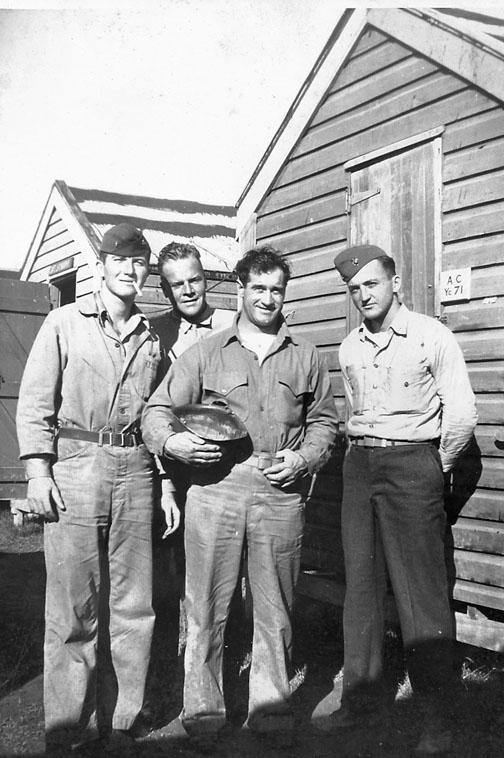
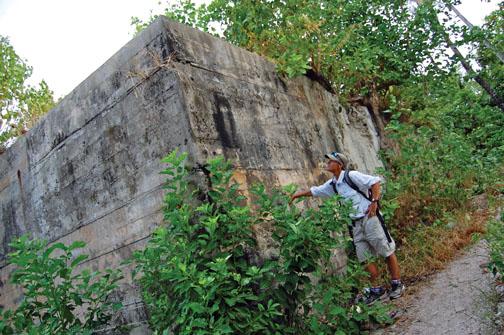
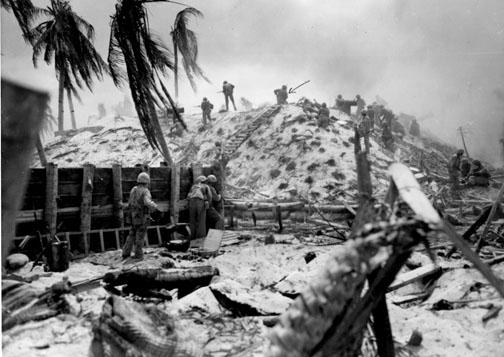
MARINE 1ST LT. ALEXANDER BONNYMAN ’32
While hundreds of Princetonians served in World War II, only one received the Medal of Honor: Marine Lt. Alexander Bonnyman ’32, who was posthumously awarded the medal for his actions at Tarawa in November 1943. Bonnyman’s story was featured in the May 13, 2009, issue of PAW.
Bonnyman joined the Marines as a 31-year-old private in 1942. His unit was slotted for the assault on Tarawa, an island in the Gilberts chain. The 35,000-man invasion force encountered unexpectedly difficult Japanese resistance, compounded by errors in the pre-assault bombardment. Many men drowned in the initial assault or were forced to cross a long shallow reef under fire.
Although Bonnyman did not have direct combat responsibility, he assembled an ad hoc demolition team to assault enemy pillboxes. As nephew Al Bonnyman ’78 says, “As a mining engineer, he knew more about blowing things up than the other people.”
According to his citation, Bonnyman “repeatedly defied the enemy bombardment to organize and lead the besieged men over the long, open pier to the beach and then, voluntarily obtaining flame throwers and demolitions, organized his pioneer shore party into assault demolitionists and directed the blowing of several hostile installations. ... He made a heroic stand on the edge of the structure ... in the face of the desperate charge, killing three of the enemy before he fell, mortally wounded.”
More than 4,000 Japanese and nearly 1,000 Americans were killed at Tarawa in three days. Many of the graves, including Bonnyman’s, were “lost” after war’s end.
Last August, the U.S. Joint POW/MIA Accounting Command (JPAC) sent a search team to Tarawa to search for the graves of hundreds of Marines like Bonnyman. Bonnyman’s grandson, Clay Bonnyman Evans, 48, a Colorado-based writer and photographer, visited the JPAC team for a week. “My grandfather has been with me my whole life,” he says. “His picture was on one wall, the Medal of Honor on another.” In Tarawa, he says, ”the ghosts are all there.”
When Evans left the island, the JPAC team of 15 Marine, Army, Navy, and civilian personnel was still in the early stages of excavating six sites. In October, the team reported finding a mass grave of Japanese soldiers but no American remains beyond two bodies found previously by civilians.
Evans met another Tarawa soldier’s grandson on the island. At low tide the men walked from the seawall to the end of the reef. “You can walk out there and see the rusting gun emplacements, bunkers, and landing craft,” he says. “I didn’t feel my grandfather’s spirit, but I felt humbled. I felt empathy for those guys. I can’t imagine the terror wading 900 yards through waist-deep water against constant Japanese fire.”
CAPT. L. WARDLAW MILES
In 1917, L. Wardlaw Miles was an assistant professor of English at Princeton; at 44 he was considered too old (and too short) to enlist in the “war to end all wars.” Nonetheless, he managed to join a New York regiment where the troops unsurprisingly called him “The Professor.” Promoted to captain, he was awarded the Medal of Honor for bravery in action near Revillon, France, on Sept. 14, 1918.
Crossing no-man’s land, he led his company in an assault on German trenches near the Aisne Canal, which other troops previously had attempted without success. Preceding the first wave, he cut through the barbed wire, suffering five bullet wounds from heavy machine gun fire, which fractured both legs and an arm. He directed the attack for two hours after he was wounded.
“Under the inspiration of this officer’s indomitable spirit, his men held the hostile position and consolidated the front line ... after which Capt. Miles was carried to the aid station against his will,” reads the citation.
An account in The New York Tribune was more blunt. “One arm was shattered early, then a leg blown off ... when they placed him on a stretcher he ordered them to carry him up and down the advancing line ... When we saw him in a Paris hospital later, he wouldn’t talk about it.”
Despite his injuries, Miles recovered and eventually became dean of the English Department at his alma mater, Johns Hopkins. He died in 1944.
CAPT. CHARLES BICKHAM 1890
Lt. Charles Bickham graduated from Princeton in 1890 and joined the Ohio National Guard in Dayton. After serving in the Spanish-American war, Bickham went on to fight in the Philippines.
In a May 1902 battle against Moro tribesmen, his unit was ordered to take Fort Pandapatan, near Lake Lanao, Mindanao. To take the fort, Bickham’s troops had to advance 1,000 yards under fire across a field full of pits containing sharpened stakes.
Bickham led his men and “crossed a fire-swept field, in close range of the enemy, and brought a wounded soldier to a place of shelter,” according to his citation. President Theodore Roosevelt presented Bickham’s award on April 28, 1904. Bickham was promoted to captain and discharged in 1910; he returned to his native Dayton and died there in 1944.
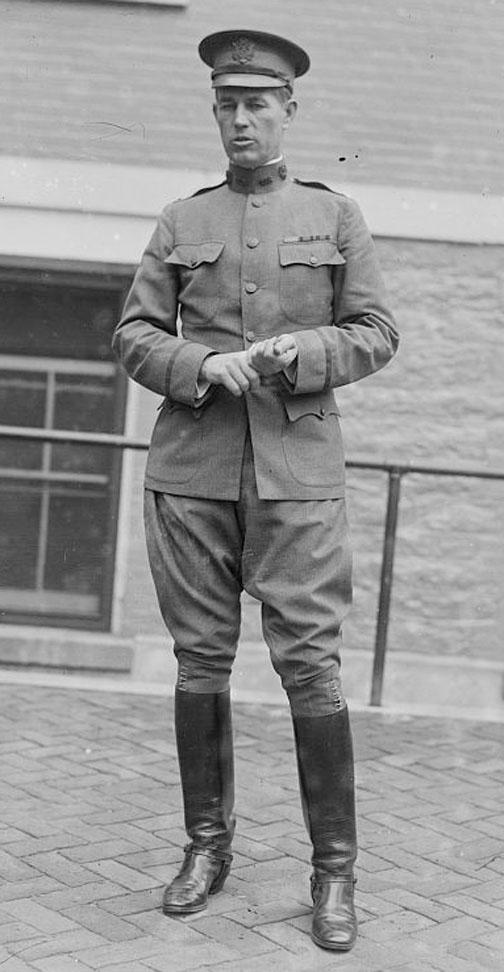
COL. GORDON JOHNSTON 1896
Princeton’s other Medal of Honor recipient from the war against the Philippine guerrillas was Col. Gordon Johnston 1896 of Birmingham, Ala., the son of Confederate Gen. Robert Daniel Johnston.
At Princeton, he played football as a tackle; football historian Parke Davis called him a “high-spirited, fleet-footed, dashing player.” After graduation, he served as head football coach of the University of North Carolina, followed by a couple of years in the insurance business.
In 1898, Johnston joined the 2nd Mississippi Volunteer Infantry as an enlisted man in 1898, obtaining a transfer a month later into the 1st Volunteer Cavalry, the Rough Riders. His commander, Lt. Col. Theodore Roosevelt, came to know Johnston and admire his ability.
Two years later, Johnson — then a second lieutenant — won the Distinguished Service Cross for leading scouts against a heavily defended insurgent position during the Philippine Insurrection. Assigned to the Signal Corps, he was sent again to the Philippines six years later.
On March 7, 1906, Johnston led a charge against a fortified hillside at Mount Bud-Dajo. Recommending the Medal of Honor, Maj. Omar Bundy wrote that Johnston “obtained permission to advance to the base of the cotta [fort]. He did this under a hot fire from the Moro rifle pit to our left. He was among the first to reach the cotta, and when the charge was ordered, gallantly raised himself up to gain a foothold to climb up in advance of the others and was severely wounded.”
Johnston remained in the Army. In World War I, he advanced rapidly to colonel and helped to plan the Argonne assault that led to the war’s end. Ironically, the cavalry man was killed in a polo accident in 1934.
His widow, Anna Julia Johnston, outlived Col. Johnston by 41 years. “She went through the rest of her life wearing widows’ weeds,” remembers Johnston’s great-nephew, Robert Garrett ’59, who frequently visited his great-aunt’s Baltimore cottage. She would regale her great-nephews with tales of life in dusty Texas Army forts, from which her husband chased the notorious Mexican bandit Pancho Villa. “She never remarried and never put on colorful clothes,” Garrett says. Anna and Gordon are buried together at Arlington Cemetery.
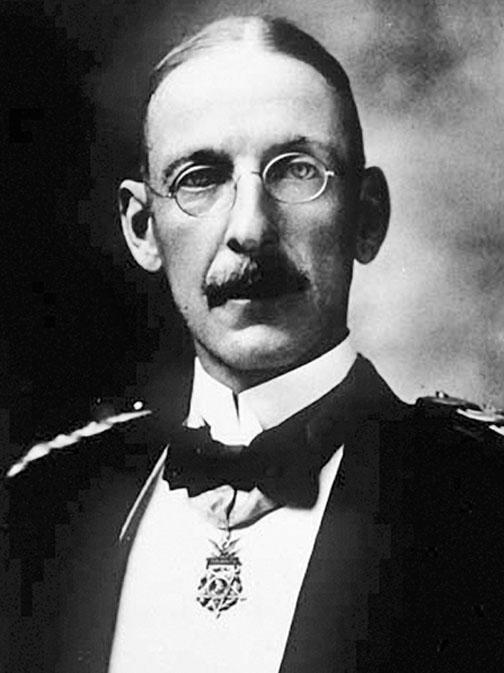
COL. JAMES ROBB CHURCH 1888
Born in Chicago in 1866, James Robb Church 1888 was one of Princeton’s greatest athletes, playing both football and lacrosse. He went on to medical school at Columbia and practiced medicine with Dr. Leonard Wood; when Wood became the commander of the 1st Volunteer Cavalry (the Rough Riders), he brought Church along as an assistant surgeon.
At Las Guasimas, Cuba, on June 24, 1898, the Rough Riders, along with the 10th Regular Cavalry, attacked a Spanish position.
Seventeen Americans were killed and 52 were wounded, many of whom were tended by Church. He “did his best to stop the flow of blood and bind up ruptured flesh throughout the morning,” his citation reads. “Time and again he braved the fusillade of enemy Mauser bullets to enter the battlefield, locate the most badly injured, and then carry them through the gauntlet of enemy fire to the safety of the rear ... .”
In 1906, Church was the first Medal of Honor recipient to receive his award at the White House, where it was presented by his former commanding officer, President Theodore Roosevelt.
Church remained in the Army as a surgeon. He was sent to observe the French Army in World War I, studying the effect of poison gases. He later examined and tested gas masks sent to France to protect U.S. soldiers, severely gassing himself during the test.
He died in 1923 at 57, as an indirect result of the gassing. In 1925, his family presented his Medal of Honor to the Princeton University Library.
SGT. ALBERT W. MCMILLAN 1884
Sgt. Albert W. McMillan (sometimes written “McMillian”) was a member of the Class of 1884, though he left after three years. “His restless spirit took him west for more ‘action’ than a college course afforded,” the Nassau Herald noted. Out West, he joined the 7th Cavalry of Little Big Horn fame.
McMillan was one of 20 7th Cavalry troopers to receive the Medal of Honor for deeds on Dec. 29, 1890, at Wounded Knee Creek, S.D. The citation reads: “He assisted the men on the skirmish line, directed their fire, encouraged them by example, and used every effort to dislodge the enemy.”
Most historians today call Wounded Knee a massacre, not a battle. A scuffle began between two soldiers and a Lakota warrior, and within an hour, more than 150 Lakota Sioux, including women and children, had been killed and 50 wounded. Army casualties numbered 25 dead and 39 wounded, many of them victims of friendly fire from their own Hotchkiss guns.
McMillan was promoted to sergeant major, but for unknown reasons he was demoted to private before his discharge in September 1892. After he left the Army, he went to the University of Minnesota law school but never practiced. While working as a legal editor, he had a breakdown, called “nervous prostration.” Still, at age 54, he joined the Red Cross when the United States entered World War I and went to Europe, where he was appointed a first lieutenant in the Red Cross’ casualty branch and worked in hospitals through the end of the war. He died in Minnesota in 1948.
In 2001, the National Congress of American Indians passed two resolutions that condemned the Medals of Honor awarded and called on the U.S. government to rescind them. However, the medals received by McMillan and the other troopers at Wounded Knee still stand.
BRIG. GEN. CHARLES E. PHELPS 1852
Princeton shares its first Medal of Honor recipient, Brig. Gen. Charles E. Phelps, with Harvard. Phelps was a Harvard-trained lawyer in Baltimore when he entered the Union Army in August 1862.
In April 1864, he was promoted to colonel of the 7th Maryland Infantry and sent to Virginia. At the Battle of the Wilderness in early May, his horse was killed under him. Re-equipped, he rode to battle at Laurel Hill on May 8 and led his troops on an attack within a few feet of the enemy’s fortifications, where he was severely wounded and captured. After his release, he was promoted to brigadier general and honorably discharged, and was awarded the medal in 1898.
After the war, Phelps was elected to Congress, serving from 1865 to 1869, and later became a judge of the Maryland Supreme Court. As a law professor at Maryland University Law School, Phelps wrote Falstaff and Equity in 1901, relating legal arguments to Shakespeare. The book begins, “Gentle readers ... will be expected to submit, without the comfort of chloroform, to the most excruciating operation known to literary surgery, the explanation of a joke.”
Awarded an honorary doctorate by Princeton in 1907, Phelps died in 1908.
Michael Goldstein ’78 lives in Encino, Calif. His May 13, 2009, PAW article about Alexander Bonnyman ’32 was a finalist in the Los Angeles Press Club competition.

